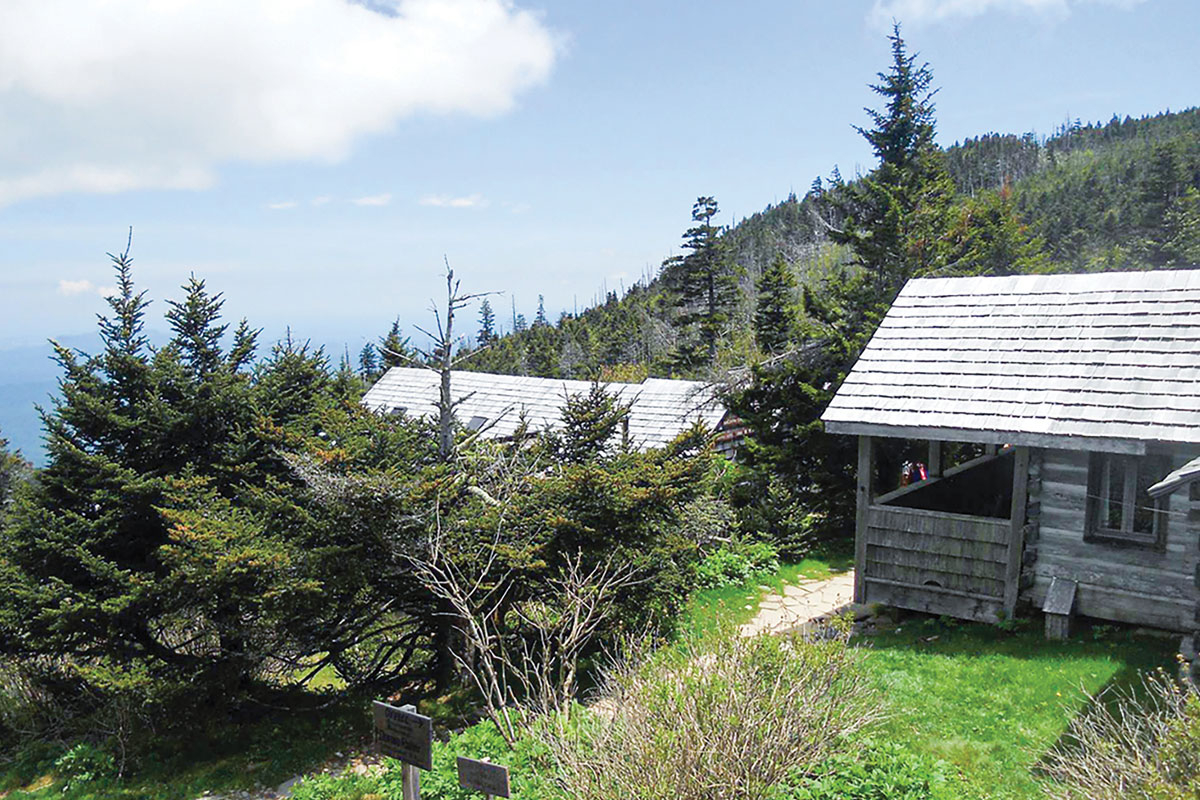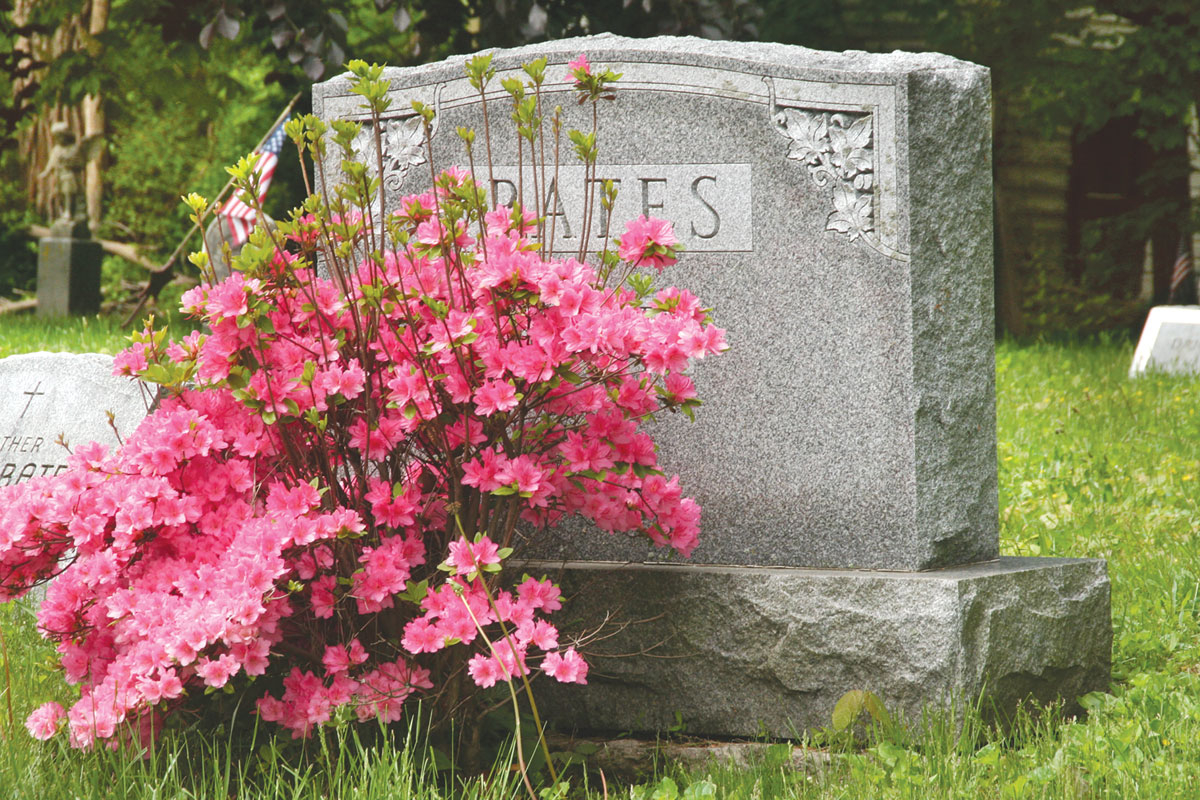Appalachian born and bred: Downtown Waynesville, Haywood Tourism both launch locally made campaigns
The Jackson County farmers market had three or four vendors who regularly showed up each week to sell their homegrown goods in 2001.
For the most part, the growers would sit around, chew the fat and trade produce.
“It was kind of our farmer’s morning out,” said Cathy Arps, who runs Vegenui Garden with her husband Ron.
The vendors would make maybe a few sales during the day. However, mostly, people would drive-by the market, roll down their car windows and glance at the offerings before zipping off.
“It was very difficult,” Arps said. But, “The farmers of the farmers market hung on.”
Now, about a decade later, the number of vendors has more than septupled and the amount of customers has grown even more.
The Jackson County market is not an anomaly. The number of vendors at the Waynesville farmers market went from fewer than a dozen in 2008 to now more than 60, with crowds perusing all their options. Beeswax candles, goat’s milk soap, sauces and rubs, cheese and round out the traditional baskets and tables of produce.
“There is a tremendous movement underfoot to save your local farmers,” said Carol James, former president with the Haywood Historic Farmers Market.
Both markets are representative of a nationwide trend that spread during the last several years. Considerably more people are buying local.
“The farmers market is sort of a snapshot of the radical change,” Arps said.
The desire to buy local goes beyond food. People are growing tired of the mass-produced, dime-a-dozen riffraff made overseas that line the shelves of retail giants. Locally made is a hip alternative.
Looking to capitalize on the movement, Haywood County and the downtown Waynesville business district are finding ways to promote locally produced merchandise that is unique to the area as well as items made within the U.S. — which seem difficult to find when perusing the tags at any area department store.
Taking a cue from the Good Morning, America series “Made in America,” Buffy Phillips, executive director of the Waynesville Downtown Association, decided to find out what businesses in Waynesville’s downtown sell items crafted in Western North Carolina and in the U.S.
“I just thought it was time we came together and promoted it,” Phillips said. “I find that customers are asking. They want to know what is made in the USA and locally.”
Phillips has been compiling a list of downtown businesses with U.S. and locally made wares. Although American-made clothes are still difficult to find, people can find WNC-made jewelry at the Jeweler’s Workbench or buy dog treats at the Smoky Mountain Dog Bakery. High Country Home sells furniture and cabinets constructed in Waynesville and hardwood floors from Franklin. And, the local brews are taking off with Headwaters Brewing Company, Frog Level Brewery and soon at the Tipping Point. With the exception of a few items, most food necessities can be found around town — from the smoked tomato jam at Sunburst Trout Market to barbecue sauces to jams and salsa.
Phillips is distributing stacks of stickers and signs to businesses along the downtown Main Street strip that each can used to advertise whether they sell products made in the U.S.
Twigs and Leaves Art Gallery is already one step ahead of the curve with a map displayed in its window, showing where in the U.S. each of its products hails from — all but a handful are from within WNC.
“I would love to think that everybody on the street would have something made in North Carolina,” Phillips said.
And, in a couple of months, the Haywood County Tourism Development Authority will launch its own similar campaign “Homegrown in Haywood.” The logo of the advertising initiative is a needle inside of a fish, inside of a duclimer, inside of an artist’s palette, inside of an apple.
Visitors want to experience the local culture, buy things that are specific to the area and eat what the locals eat, said Lynn Collins, executive director of the Haywood TDA. The marketing campaign helps point people in the right direction and also advertise the things that make the county different.
Part of the movement in Western North Carolina is also about preserving Appalachian culture, which is why the dulcimer — a locally significant instrument — is included in the tourism agency’s logo.
In addition to food and art, there are blacksmiths who makes tools, woodworkers who build tables, soap makers, bookbinders, people who manufacture guns — all too numerous to count.
“Locavesting” catching on
People aren’t just purchasing more items grown, constructed and masterminded in Western North Carolina, but they are willing to invest in local ventures.
For example, when Annie’s Naturally Bakery closed late this year, 10 area residents pooled their money to help the popular Sylva joint reopen.
“I think this is a concept that makes a lot of sense to a lot of people,” said Frank Lockwood, an assistant professor of Entrepreneurship and Innovation at Western North Carolina University. “I think we will find more and more examples of this locavesting as we figure out how to do it.”
Along the same vein, some area growers have begun selling season-long memberships to their farm’s bounty, guaranteeing an individual a portion of the crops that are harvested each week.
“It is basically like people buying a subscription to your product,” Arps said.
Although the products are slightly pricier than their grocery store counterparts, people are willing to pay that little extra for natural products without all the additives, preservatives and extra unnecessary stuff.
Jackson resident and farmer Jackie Hooper hasn’t heard any complaints about her reduced sugar apple butter-like spread. In fact, she said, less is what more people are looking for.
“People don’t seem to mind that there isn’t more sugar,” said Hooper, who also sells chicken, quail and rabbit, among other items. “They are actually glad because sugar is one of the things they are actually trying to cut down on.”
That sentiment hits on a big reason why people want to buy straight from the farmer rather than the grocery store. People are more health conscious compared to the past.
“They are really reading package labels,” said Hooper, of Shared Blessings Farm in Cullowhee. “They no longer want to buy it ready-made in a grocery store.”
In many cases, the product is also tastier, since it had a shorter distance to travel before it ended up on someone’s plate.
Robin Smith, of Lenoir’s Devon in Canton, is one of several cattle farmers in Haywood County whose focus is to deliver fresher, higher quality beef without a middleman.
“We were just really interested in selling a better product than the grocery stores had,” Smith said. “(The beef) doesn’t go from a big plant and have additives in it.”
In places like Western North Carolina, the movement only seems natural given the vast tracts of open land. There have always been farmers in the area, but after WWII, fewer Americans grew their own food or received produce from a nearby farm. And now, the nation is moving back toward its roots.
“There are now people that are willing to grow the products and make it available,” Lockwood said. “In the neck of the woods we live in … it’s something that makes a lot of sense.”
The dour economy has also played a role in national shift in mentality as people lost their jobs and saw manufacturing facilities move overseas, making buyers more conscious of where their purchases come from.
“I guess now with a loss of businesses and employees, we don’t want to lose anymore,” Phillips said.
Haywood County employees given first dibs on new money in budget
During budget discussions earlier this year, Haywood County commissioners were adamant about their commitment to give county employees a boost after three years of no raises and frozen retirement contributions.
Commissioners stayed true to their word, based on a proposed budget released this week. The county will partially restore a 401K match, contributing 1 percent of employees’ salaries. The county won’t be giving across the board cost-of-living raises, but will give merit raises to some staff of up to 2 percent. The 401K match for some 500 county employees will cost $195,000.
This will be accomplished without raising taxes. The county’s budget has modest natural growth in revenue of $1.3 million — thanks to construction that’s added to the property tax base and an uptick in consumer buying, which means more sales tax.
The total overall budget is nearly $66.6 million. It is still down by more than $1 million compared to 2007-08, meaning the economy is slowly bouncing back but still is shy of pre-recession numbers.
The 1 percent 401K contribution is a far cry from the 5.5 percent match the county did during the 2008 fiscal year. When the economy went sour, it temporarily stopped contributions to save money.
“We are trying to phase it back,” Stamey said.
Something new this year is a one-time extra bonus for law enforcement officials. Officers will receive a bonus check, equivalent to one percent of their salary, on the anniversary of their hire date. The total cost will be about $38,000.
Haywood lends helping hand to schools, but not enough to make up the gap
Haywood County commissioners have increased funding to the county school system this year for the first time in four years, but with cuts in state and federal funding, the boost from the county won’t be enough to help plug the schools’ budget hole.
The county is chipping in an extra $350,000 toward in the operating budget for Haywood County’s elementary, middle and high schools.
But, the school system will see an almost $400,000 cut in state money, the loss of $1.7 million in emergency federal funding extended to schools during the recession, and a reduction in lottery money for building maintenance and construction, said Assistant Superintendent Bill Nolte.
“We are starting a couple million in the hole,” Nolte said, adding that schools are grateful for the money from the county.
Haywood County schools will receive $14.3 million next year for operating expenses and $256,000 for capital projects. The county slashed the capital budget for school maintenance four years ago by two-thirds, and has yet to restore it. Schools have a troubling backlog of repairs as a result.
The school system presented a nearly $900,000 wish list for capital projects, listing several critical items including a new school bus and roof repairs at its meeting with commissioners more than a week ago.
Instead, commissioners decided to direct their increase in school funding to operational costs for the schools.
“You will see a little bump,” said County Manager Marty Stamey. “I wish we could do more at this time.”
The increase is designed to get the county back on track with a funding formula that had fallen by the wayside during the recession.
“We were able to go by the formula until the economy went over the cliff,” said Board Chairman Mark Swanger.
About eight years ago, the county brokered a deal with the school system designed to curb what had become an annual fight over how much money the county would pony up.
“It seemed like there was always a fight,” said Commissioner Kevin Ensley, adding that talks are more agreeable since both parties approved the formula.
Under the deal, the county would use a formula based on student population to determine school funding each year. The formula also built in a 1 percent increase year to year. But, it has been frozen for the past four years.
As the economic prospects have started looking a bit sunnier, officials were grateful for the help from commissioners.
“We would be pleased to be back on the formula,” Nolte said. “The economy is still not recovered so if they have the revenue to put us back on the formula negotiated several years ago, we would view that as very positive and be every thankful for that.”
Unlike the county school system, Haywood Community College did not ask commissioners to increase its operating budget this year but requested that the board would allocate any additional funding to capital projects, such as road repairs and building renovations.
HCC presented the board with more than $2.6 million worth of capital projects at a recent budget meeting on its ultimate wish list, but only asked for $500,000.
“They commented that they knew that that could not be funded, but they wanted to make use aware of what those needs are,” Swanger said.
In the proposed budget, the county will allocate $176,000 to HCC’s capital projects — an increase of $56,000.
Besides the schools, other department’s budgets remained relatively on par with this year’s numbers.
(Reporter Becky Johnson contributed to this story.)
Haywood grapples with medical costs for inmates
Marty Stamey, like any county manager, takes pride in crafting a water-tight budget: one that squares up the minutia of how many reams of computer paper and tanks of gas county employees will use on one side of the ledger with property tax and sales tax flowing in on the other.
But no matter how persnickety Stamey is in his forecasts, there is one irksome line that’s simply a roll of the dice. So he just crosses his fingers, gives it his best guess and hopes like heck a jail inmate won’t need open heart surgery.
Whether it’s a simple cavity or a serious brain aneurism, any medical ailment that befalls inmates while awaiting trial lands on the county’s tab. Even medications inmates are on, whether its insulin for diabetes or blood pressure medicine, are filled courtesy of Haywood County taxpayers.
Haywood isn’t alone. All counties are saddled with what Stamey called perhaps the “most unpredictable” area of the budget.
The county will spend around $230,000 in medical costs for inmates in the current budget year. Most of that is for hospital bills and visits to specialists, for everything from X-rays to dental work. But, the sum also includes an in-house nurse, a retainer for an on-call doctor and prescription meds.
The costs and hassle of managing inmates’ medical needs has become so complicated, however, the county has decided to outsource the job to a private firm.
The firm, Southern Health Partners, manages medical care for inmates at 190 jails and prisons in 13 states. Half of North Carolina’s 100 counties contract with the firm.
Haywood County will pay the company $134,000 a year for basic medical care to inmates. The contract isn’t all-inclusive, however. It mostly includes nurse and physician services provided at the jail, such as health assessments and dispensing daily medications taken by inmates.
The fee only covers the first $30,000 in hospital bills, visits to specialists and medications. Anything more than that, the county will still have to pay for.
The county has earmarked another $70,000 in its budget for that, so when it comes to the total cost of providing medical care for inmates, the county is budgeting $205,000 —compared to $234,000 now — a small net savings.
Regardless, it’s worth it simply not to deal with it, said Haywood Sheriff Bobby Suttles.
“Even if it is a wash or is a little bit more, it is still a good deal in the long run,” Suttles said.
The county still faces a potential legal liability if something goes wrong with the medical care provided to an inmate. The county currently faces a lawsuit from the family of a female inmate who died. She was rushed to the hospital after collapsing, but the family blames the jail for not paying closer attention to her condition and failing to take action sooner.
Contracting with a firm to handle medical care won’t absolve the county from being targeted by such suits, but the firm would at least be named in the suit along with the county as a co-defendant.
“The whole point of this is to get our risk down and our performance up,” said Julie Davis, the county finance officer.
The firm should deliver a higher standard of medical care and expertise. That will hopefully translate to fewer trips to the hospital as the staff brought in by the firm will be able to more confidently handle health care needs.
Stamey said the firm will do a better job determining when an inmate truly needs to go to the hospital.
“Sometimes they probably don’t need to go, but to be on the safe side, we probably send them on to the hospital,” Suttles said.
Jailers also will get training on how to handle medical needs when faced with them.
There could be other hidden savings as well. Any inmate going for medical care has to be accompanied 24-7 by a deputy. When a deputy is taken off his regular assignment to escort an inmate to the hospital, a back-up deputy is called in to cover the hole.
“That’s running me into money,” Suttles said. “I think in the long run it’s going to save.”
Being able to provide more health care at the jail instead of sending the inmates out for care is where the $30,000 in hoped-for savings would come in. Also, helping to save money on hospital bills for inmates is a new health care network for jails, formed under the N.C. Sheriffs’ Association.
Currently, the county has to pay the out-of-pocket rate when taking inmates to the hospital or to see specialists. Under the Inmate Medical Costs Management Plan through the state sheriffs’ association, the county would be eligible for a discounted rate, much like the discounted rate insurance companies are able to negotiate.
There’s roughly 75 inmates bunked up in Haywood’s jail any given night. Some are there serving short sentences, like a week-long stint for DUI convictions. But, most have only been charged with a crime and are still awaiting trial.
If convicted, they are sent off to state prison to serve their time and are no longer a health care liability for the county. If they aren’t violent or considered a flight risk, and they get out on bond while awaiting trial, they likewise aren’t the county’s problem.
It seems to Suttles like more inmates than ever are on medications now or have health problems. Buncombe, Transylvania, Henderson and McDowell counties all contract with the same firm.
Artful birding
I had to take my shoes off to get there, but I believe last Saturday (April 28) was the 13th annual Birding for the Arts. BFA is part of the Haywood County Arts Council’s “Fund Party Series” – entertaining, fun events that help fund the Arts Council and all the wonderful things they provide for our community. You can learn more about the Arts Council and their Fund Party Series plus much more at www.haywoodarts.org.
Gracious and enthusiastic hosts for this annual event are Joe Sam and/or Kate Queen. We meet at 8 a.m. at the Performing Arts Center to get a quick overview of the day and begin our birding. This is where we pad our list. If you’re looking for numbers on a daily bird trip, you have to include the common “yard birds” like European starling, mockingbird, robin, house sparrow, etc.
After the Performing Arts Center we set out for Lake Junaluska, then to the Blue Ridge Parkway, where we dine at the Waynesville Overlook before heading on up and then descending down either N.C. highway 215 or U.S. 276, through the forests to the farmlands of Bethel and back to the Performing Arts Center.
Guests are free, of course, to bird for as long or little as they wish. The whole day generally lasts till around 5 or 5:30 p.m., and we wind up with around 80 species. We keep an “official” tally and, of course, not everyone sees and or hears every bird recorded but we do our best to get visuals where we can and point out songs and or calls. We had 13 participants meet at the Performing Arts Center this spring and six plus Kate and I stuck it out for the whole day, recording 83 species.
The thing about birding one day during spring migration is there are always hits and misses. Last Friday, there were Cape May and palm warblers at Lake Junaluska but neither was present on Saturday. However, great looks at a black-crowned night heron at the new wetlands and a common loon in full breeding plumage fishing just 50 feet or so from the shore provided a couple of good hits to make up for those misses. We also got outstanding looks at an osprey perched near Highway 19.
The Parkway started out a little slow but the Waynesville Overlook was productive as usual. We lunched with rose-breasted grosbeaks, scarlet tanagers, blue-headed and red-eyed vireos, chestnut-sided warblers and blackburnian warblers.
We didn’t see any peregrines at Devil’s Courthouse, but we did get up close and personal looks at a pair of Canada warblers. We were also able to list golden-crowned kinglets from there, as we heard them but couldn’t get any looks.
We were kinda stuck in the high 70s species wise, but our last stop at a wet area near Bethel gave us the boost we needed by adding yellow warbler, blue-gray gnatcatcher, great blue heron, blue-winged teal, wood duck and belted kingfisher.
Birding for the Arts is a great low-key yet high quality birding experience for novice and experienced birders. And if you can’t spend an entire day – the morning, through lunch at the Waynesville Overlook, is well worth the ticket price. I believe we tallied 61 species by the time lunch was over last Saturday.
And there are more birding opportunities available in Haywood County. If you’re interested in linking up with birders in the area try the Carolina Field Birders at http://groups.yahoo.com/group/CFBlist/ or contact Connie Wulkowicz at This email address is being protected from spambots. You need JavaScript enabled to view it.. There is also a new Audubon Chapter in the area, Great Smoky Mountains Audubon at http://gsmas.com/Site/Welcome.html.
And please support your local arts council and join us for another fund day, next year at the 14th annual Birding for the Arts.
(Don Hendershot is a writer and naturalist. He can be reached a This email address is being protected from spambots. You need JavaScript enabled to view it..)
South Main plan dredges up old parking debate
The Waynesville Board of Aldermen approved a revitalization plan for South Main Street last week despite a dispute over one aspect of the proposed design scheme.
The town hired Rodney Porter, a consultant with LaQuatra Bonci in Asheville, last year to study South Main Street. The area has grown increasingly run-down and unattractive. Town leaders hoped new street scheme would promote more economic development along that stretch of road, prompting a year-long public process to develop a new vision for the corridor.
Porter’s report assessing South Main peppered with less-than-flattering language describing South Main: deteriorated condition; not economically healthy; dilapidated structures; no distinct image; scrubby patches of overgrown and unattractive weeds; seldom pedestrian traffic.
Porter addressed the board again last week to show-off his plan to make South Main Street more attractive to developers. His plan includes bike lanes, a continuous sidewalk, a roundabout where Main and Riverbend streets and Ninevah Road intersect, and a four-lane road from Allens Creek Road to Hyatt Creek Road.
The plan received overall positive feedback from the public, but two aldermen and the mayor expressed apprehension about one aspect that seemed to open an old can of worms. Rearing its head again was the ongoing debate over parking lots — namely should parking lots go in front of buildings or be scooted to the side and rear?
Porter felt strongly that parking lots should be to the side and rear, allowing building facades to define the street’s character rather than asphalt and parked cars.
The town of Waynesville had once been in Porter’s camp. Its development standards once required parking lots to sit to the side or rear of buildings, and for facades to flank the street front.
But in response to complaints from developers, the town board recanted and began allowing small, limited parking areas in front of buildings in certain commercial districts, including South Main Street.
In contrast, the consultant wanted the town to go back to its old requirement of storefronts and not parking lots abutting the street — creating a quandary for some of the aldermen.
“Is there a way of modifying this report?” said Mayor Gavin Brown. “I don’t want to have my name on a document that is contrary to another document that I signed less than a year ago.”
Porter stood his ground and fought for the plan to stay as is.
Placing parking lots to the side or back of buildings gives South Main a distinct identity and makes it pedestrian friendly, Porter said. What is the point of creating a plan otherwise, he asked.
“If we pull those buildings back (farther off the street), I really don’t know what we are doing more than putting trees in the sidewalk,” Porter said. “That really sort of strays away from the ‘complete streets’ movement that we have.”
The so-called “complete streets” concept focuses on making a street user friendly for everyone — motorists, cyclists and pedestrians — rather than purely auto-centric.
“It’s not in keeping with complete streets, and you are separating the pedestrian atmosphere with another row of parking,” Porter said. “You would not have the opportunity for any significant street frontage, and depending on how the traffic is laid out, you would quite possibly end up with more curb cuts.”
Curb cuts increase the likelihood of an accident.
Aldermen Gary Caldwell and Julia Freeman sided with Brown, saying they felt uncomfortable approving a plan that runs counter to current land development standards.
“To contradict what we currently have as a land development standard, it’s troublesome to me,” Freeman said.
Paul Black, director of French Broad Metropolitan Planning Organization, voiced his approval of the plan and its commitment to complete streets concept. A parking lot would split the sidewalk and storefronts making it more hazardous for pedestrians, Black said.
“It would be very difficult to have a sidewalk café if the waiter’s got to walk across the parking lot,” Black said. “I don’t know if there is a way to reconcile your development code with the plan.”
Alderman Wells Greeley did not openly express an opinion about the plan, while Alderman LeRoy Roberson endorsed the plan as laid out by the consultant.
After more than an hour of comments and discussion, new Town Manager Marcy Onieal found the plan’s golden ticket to passage — a sentence on page 19 of the report that says all proposed development must meet the town’s land development standards. That means that the town’s ordinances would override any contradictory language proposed in the plan.
The board ultimately passed the South Main Street master plan as is.
“I can live with it,” Brown said.
None of the disagreements will matter, however, once the N.C. Department of Transportation gets its hands on the project. The plan is merely a guideline for DOT, detailing what Waynesville would like to see happen to South Main. But, it is by no means set in stone. DOT could decide to scrap the town’s plan altogether or only incorporate parts of the layout when it revamps the street.
“We’re going to have a big comedown with reality when DOT gets ahold of this and starts designing the road,” said Town Planner Paul Benson. “We are going to get a definite reality check as the program proceeds forward. But, I think at this point I don’t see any problem personally with having sort of an idealized plan out there.”See for yourself
Check out the South Main Street revitalization plan for yourself at www.townofwaynesville.org.
What’s in a name? Image is everything when it comes to slogans
Tee Coker and his company recently learned firsthand something they probably already suspected about creating brands and taglines for towns. Forget about pleasing everyone: it can be an insurmountable challenge to please anyone at all when it comes to developing exactly the right slogan for a community.
“It turned out a tagline wasn’t something Highlands either wanted or needed,” Coker said, perhaps reminded about Coca-Cola and its legendary public-relations disaster with “new Coke.”
Coker and his marketing consultant company, Arnette, Muldrow & Associates, were trying to convince Highlands’ leaders that the town had an upgraded image and needed a new slogan to match. Coker’s masterpiece — “Simply Stunning” — was destined for the same dustbin of history as new Coke, however.
Coker didn’t take the rejection personally, it should be noted. That’s just part of the job when your profession is developing taglines or slogans.
“It’s fun to do this for the most part,” Coker said. “But, it’s certainly challenging.”
Coker said that each community the company works with has its own personalities involved and various motivations at play for developing taglines. That can make reaching consensus difficult.
In Western North Carolina, quite a few communities have adopted a brand and slogan. Maggie Valley is “Can you come out and play?” Franklin is “Discover us.” Macon County is “Enjoy the beauty, discover the life.”
The challenge is coming up with a slogan or motto that highlights a community’s assets and creates an identity to distinguish it from other places. That can be difficult because everyone here, more or less, plays off our mountain locale.
In Haywood County, the tourism agency uses “See yourself in the Smokies.” Neighboring Cherokee is “Meet me in the Smokies.”
In local communities, the task of picking taglines has been taken up by marketing professionals, town officials, residents and wide assortments of tourism-oriented committees.
Community pride
In Western North Carolina, logos and slogans reflect the heritage, history and image of the region’s towns.
Big cities use big dollars to brand and create taglines. New York is “The city that never sleeps.” Chicago is the “Windy City.” Virginia is for lovers. Las Vegas is “What happens in Vegas stays in Vegas.” Austin is “Keep Austin weird.”
But, branding and taglines are not just for the big cities of the world. When any city, county or state adopts a tagline, slogan or motto, it’s pitching that destination as a place to visit, live or work.
“We wanted something understated and unique to Highlands,” said Ron Shaffner, design committee chairman for the Highlands Small Town Main Street Program. “‘Simply Stunning’ sounded like something that relates to weddings or diamonds — and that’s not Highlands. We felt ‘Simply Stunning’ might become ‘Simply Cliché’ after 10 years or so.”
Arnette, Muldrow & Associates led a series of roundtables in Highlands during two days in February. While the “Simply Stunning” slogan is a no-go, the design committee has pretty much settled on a suitably understated logo: an image of a tree simply baring the town’s name, “Highlands, North Carolina.”
“It turns out Highlands doesn’t really have to market itself aggressively so it isn’t that shocking that they don’t want a tagline. Highlands is a special case in many ways — there’s not really any other analogous communities in the Southeast,” Coker said.
The logo is simple and small enough to fit on a lapel pin or to go on letterheads or even on the sides of town vehicles.
The town might use its elevation — 4,118 feet — in branding efforts too, he said. The Highlands Chamber of Commerce already capitalizes on that claim to fame as the basis for its distinguishing slogan “Above it all.”
A changing community
“The tough thing about it is trying to make a tagline that is all things to all people,” said Matt Pegg, executive director of the Cherokee Chamber of Commerce.
Cherokee, as much as any community in WNC, is in transition. For decades the Cherokee Indian Reservation marketed itself as a family destination for cultural events. That’s still true, but now you also have Harrah’s Cherokee Casino and Resort and such specialty niches as trout fishing on the Oconaluftee River.
Pegg said a good slogan must reflect the myriad nature of the offerings in a community such as Cherokee but not be so generic as to be useless.
“And there’s probably not another place you can go from the National Park to all the glitz and glamour of what will be at Harrah’s,” Pegg said, referring to the casino expansion and the new casino entrance under construction. Known as the rotunda, the new entrance that will feature shining five-story trees made of colored glass, with a 75-foot waterfall cascading down the middle and a 140-foot screen wrapping around the walls where choreographed light and surround-sound shows will be projected.
Pegg said committees and marketing professionals helped develop Cherokee’s taglines, including the currently in use “Meet me in the Smokies.”
“If it’s something we can do we try to do it internally, but we’ll certainly bring in groups to help, too,” Pegg said.
Heeding demographics
Until recently, neighboring Swain County like Cherokee played off of its position next to the Great Smoky Mountains National Park. For several years, Bryson City used “base camp for adventure.” After reviewing visitor demographics, the town opted to change course, however.
Karen Wilmot, executive director of the Swain County Chamber of Commerce, said that it turned out the most important decision maker when it comes to trips to Swain County is actually 40-year-old women. The “base camp for adventure” was deemed too extreme to attract a wide cross section of visitors, particularly that imaginary 40-year-old woman.
“We do get a lot of younger folks, but we didn’t want to scare off that other demographic by saying we’re too extreme,” Wilmot said, saying she didn’t think most 40-year-old women were looking for freestyle kayaking events or to mountain bike at Tsali Recreation Area, two well known Swain County-based sports possibilities.
“We wanted to think about that armchair adventurer, too,” Wilmot said, saying the tourism agency wanted to include gentler outdoor adventuring such as walking up Deep Creek to see the waterfalls.
In the end, the tagline chosen was open ended: “My Bryson City is …. (you fill in the blank).” The message, and the photo accompanying it, changes according to the publication viewers being targeted — “My Bryson City is dazzling” might accompany an advertisement highlighting autumn color. “My Bryson City is the Dragon” could accompany a photo of a motorcyclist targeting a riding audience.
“It is an easily manipulated yet consistent message,” Wilmot said, adding that an advertising firm helped develop Bryson City’s changing tagline.
“We were all sort of thinking the same things, and we knocked ideas around in a creative meeting then took a couple ideas to the board,” she said.
Bryson City is also an example of how difficult it can be to rid yourself of an old tagline you might have outgrown. For years the town went by “unhurried, unspoiled and uncommon,” and in fact, there’s still a sign on old U.S. 19 coming into town boasting this fact. Brad Walker, a former town mayor who’s long been involved in the hotel business in WNC, said that particular tagline of “unhurried, unspoiled and uncommon” was developed by the tourism agency in Swain County some 10 or 15 years ago.
“We were trying to figure out what the town is. And we decided the biggest thing we are is that we are in the Smokies, and we are the opposite of Gatlinburg,” Walker said.
So “unhurried, unspoiled and uncommon” really meant not Gatlinburg, Walker said.
Asheville, formerly “Altitude affects attitude,” has also undergone a change that reflects the city’s transition and newest image as a center of all-things-hip. Asheville is now “Any way you like it.”
Taglines and identities can be funny things. Some communities — in this case, Bryson City once again — can be downright protective of them. Bryson City recently took issue to the wording on a public art piece being installed on Main Street in Waynesville.
Donations are helping erect a replica of a historic arch that once spanned Waynesville’s main street, proclaiming the town as the “Eastern Entrance to the Great Smoky Mountains National Park.”
That wording was too long for the artistic replica, however, so instead it will bear the words “Gateway to the Smokies.”
Not long after news stories ran about the arch, Waynesville Town Manager Lee Galloway received a phone call from Bryson City Town Manager Lee Callicutt regarding the wording on the arch. It was a slogan that Bryson City has used on its seal and police department badges for decades.
Callicutt had been directed to pass the concern of the Town of Bryson City onto Waynesville. The concern was duly noted but nothing came out of it.
Deciding around the table
Advertising agencies and companies can spend a fortune writing the right tagline. Small towns don’t have that kind of money. So sometimes they simply borrow.
Macon County’s current tagline, “Enjoy the beauty, discover the life” is a tweaked version of one a small business there was using, said Linda Harbuck, longtime executive director of the Franklin Area Chamber of Commerce.
Committees are used in Macon County to decide on taglines, saving on dollars and tapping local talent when it comes to defining the exact image to project. Harbuck said that community has had a number of different taglines during the years. The longest running one was “gem capitol of the world,” a play off of the large number of gem mining operations in Macon County. Macon County also has used “Mountain treasures, simple pleasures.”
“We don’t have any scientific ways of coming up with them,” Harbuck said. “A lot of things have just come from us sitting around the table talking.”
That’s been true in Maggie Valley, too, said Teresa Smith, executive director of the chamber of commerce there.
“We’ve used several recently,” she said. “We are trying to play off the park and being in the great outdoors.”
Maggie Valley uses a marketing committee to come up with choices. During the past several years, the town has used “Maggie’s calling.” Last year, they used “Far enough away yet close enough to play.” This year, it was tweaked to “Can you come out and play?”
Smith said it is indeed difficult to come up with taglines that make all those involved happy. Maggie Valley tourism leaders hold several meetings a year to do just that, usually working around a theme to help define the image Maggie Valley wants to project.
Jackson County recently has scaled down its slogan to focus on a single image it wants to project: mountains. The Jackson County Chamber of Commerce recently has been just using “N.C. Mountains.” It has also used “Mountain lovers love Jackson County” during the past few years, and previously used “A change of altitude,” said Julie Spiro, executive director of the chamber of commerce.
Brand vs. tagline
Betty Huskins, a longtime marketing expert with Ridgetop Associates, makes a clear distinction between brands and taglines. A brand, Huskins said, “is who you are in other people’s minds. A lot of people feel they’ve developed a brand when they’ve gotten a slogan or tagline, but you can’t just choose that.”
You can’t, in other words, choose the perception people have of you simply by picking a catchy slogan.
Huskins said ideally in marketing “you have to see who you are and build what you want to be.”
Huskins said the best taglines, as she was taught and still believes, should be no more than three words (think Highlands’ “Above it all.”)
A tagline, she said, should ultimately define “who you are and what you do.”
Lynn Collins, executive director of the Haywood County Tourism Development Authority, said a tagline has to generate an emotional response.
“You may think it is wonderful, but if people don’t respond to it, it doesn’t do much good,” she said. “If you have a really good slogan they know where you are talking about. It needs to appeal to people on an emotional level.”
The Haywood County Tourism Development Authority is currently using “See yourself in the Smokies.” The previously used tagline, “where the sun rises on the Smokies,” is still used too on logos, Collins said.
A few years ago, Haywood County made the tagline switch to “See yourself in the Smokies” on advertising to try to get prospective visitors to picture themselves doing such activities as skiing or hiking.
“We did it to get people to put themselves in that photo and imagine doing those activities,” Collins said. “It’s just another format of using the Smokies and to evoke that emotional response.”
Like Huskins, Collins makes a distinction between branding and taglines. Haywood County’s brand, she said, “is our natural scenic beauty.” The slogan is to try to get people to come and participate in that great scenic beauty in Haywood County.
Current slogans:
Bryson City: My Bryson City is ___
Canton: Where the mountains kiss the sky
Cashiers: Nature’s design for enjoyment
Cherokee: Meet me in the Smokies
Franklin: Discover us
Haywood County: See yourself in the Smokies
Highlands: Above it all
Maggie Valley: Can you come out and play?
Macon County: Enjoy the beauty, discover the life
Facebook-submitted slogans, courtesy of our readers
asdasdfasddf
Trash shuffle prompts Canton to privatize garbage pick-up
Canton and Waynesville’s paths have diverged when it comes to the most cost efficient way to haul trash to White Oak Landfill.
Both towns will face higher costs to dump residents’ trash starting this summer when the county closes a trash transfer station that served as a mid-way point and instead will require towns to truck trash all the way to White Oak.
The Canton town board decided last week to privatize trash pick-up. Rather than running its own trash fleet, Canton will contract with Henson Waste Disposal starting July 1. The company is based in Canton.
To continue trash pick-up in-house, Canton would have had to hire additional garbage men and buy an additional truck to haul loads out to White Oak and back — an additional 40 miles, or one hour, round-trip for each load.
The extra long trip made it difficult to gauge what would be cheaper — contracting a company or doing the work itself.
“That is the reason we have to look at it to see if we are going to have to go out and buy heavy duty vehicles or contract it out,” said Alderman Ed Underwood.
Town Manager Al Matthews said no town workers will lose their jobs as a result of the switch over, as the town crews that do trash pick-up will stay on the town’s payroll in the streets department.
Henson Waste was the apparent low bidder with a price of $184,884 a year. However, it is currently unknown what the contract price will be. The town and Henson Waste are still negotiating “minor technicalities” within the contract, including a possible fuel adjustment clause, Matthews said.
The county is estimated to save $800,000 to $900,000 annually as a result of closing the transfer station — some of which commissioners said it will give back to towns to help cover their additional costs.
Hauling trash the additional distance to White Oak will also impact commercial garbage haulers and industries with large trash volumes, like manufacturing plants or the hospital. County residents, however, can continue to use one of the many convenience stations located throughout the county.
The town of Waynesville had briefly considered contracting out its solid waste operations as well but decided to continue hauling its own waste based on an analysis done with the help of Land-of-Sky Regional Council, a government planning and development organization in Asheville.
Although there will be additional costs associated with the decision — including the purchase of a new, more efficient rear-loading garbage truck and one new employee — the town does not yet know how much more it will have to shell out each year, said former Town Manager Lee Galloway. Galloway is remaining on board with the town as a consultant until the end of June.
Additional costs for the town will also translate to more money out of residents’ pockets every month. Residences currently pay $6.50 a month for trash pick-up.
“We will be recommending a rate increase,” Galloway said. The amount of the increase is also unknown.
To help mitigate the added cost and cut down on trips to the far away landfill, Waynesville will continue to promote recycling. There is grant funding available for towns to purchase recycling carts or bins for their resident, and Galloway would like to see Waynesville take advantage of that.
“We need to make it easier for people to recycle,” Galloway said. “I would love it if the town could apply for and get money for carts.”
The town currently picks up blue bags full of recyclables from homes and businesses. However, it does not collect cardboard or glass from businesses.
“We haven’t collected cardboard in probably 10 years,” Galloway said. “There is a guy (from Henson Waste) who picks up cardboard and hauls it to Jackson.”
Business owners should call Henson Waste if they wish to have its cardboard and glass picked up for recycling.
The county is also making a push for increased recycling countywide. The goal is to decrease the amount of waste in landfills by eventually recycling at least 40 percent of its refuse. Haywood County currently recycles 11 percent of its garbage and hopes to increase that to 20 percent during the next 10 years.
It also plans to add to the list of items that can be recycled, such as glass, cardboard, paper and plastics. Soon, the county hopes to recycle carpet and shingles.
The county sells its recycled materials to companies around the U.S., which amounted to more than $642,000 in gross revenue during the last fiscal year.
“We use the revenue from the recycling to offset our costs,” said Stephen King, director of Recycling and Solid Waste Management in the county.
Voice your opinion
The Haywood County Board of Commissioners will hold a public meeting at 5:30 p.m. Monday, May 7, on its 10-year solid waste plan. The plan, which details the county’s goal regarding solid waste, is available at www.haywoodcounty.net. The website also lists what items the county currently recycles.
Strapped by budget cuts, Haywood schools suffer from building upkeep backlog
When the maintenance director for Haywood County Schools received news that a transformer at Pisgah High School stopped working last Thursday, it seemed apropos given the grim portrait of the schools’ budget he and other education officials would paint for county commissioners later that day.
The school system has made a plea to county commissioners to more than triple what it’s getting now for maintenance, repairs and building upkeep. While a sizeable increase, the school system has been barely scraping by in recent years. It’s capital budget was slashed by two-thirds when the recession hit four years ago.
This year, the school system says it needs its former funding levels restored — plus some — to help dig itself out of the maintenance backlog. It needs $839,000, including such critical things as a new bus, roof replacements and emergency sidewalk repairs.
“Most of what we need there is for emergency things that seem to always come up,” said Tracy Hargrove, maintenance director for Haywood County schools.
One of those emergency needs is the $20,000 transformer that failed at Pisgah High School — a cost that the school system had hoped to delay until the next fiscal year.
“We have several projects that are relatively critical that we have been kicking down the road a little bit,” Hargrove said.
Not to mention, the county’s 22 buses are wearing down as the numbers on the odometer quickly tick higher and higher. Bus drivers are sometimes forced to swap vehicles if classes are scheduled to take a field trip as some of the buses fair better than others.
And, next year, schools are projected to receive 53 percent less funding for capital projects than they did in 2008, Hargrove said.
The school system is also dealing with a depleting fund balance, the amount of money it has left at the end of the year that essentially makes up its savings account.
The school system ended the 2010-2011 fiscal year with a balance of $4.2 million. But, funding cuts have since drained that reserve. Officials estimated that the schools will only have anywhere from $500,000 to $1 million leftover at the end of the next fiscal year.
“It will only last a year or so and then we’re in trouble,” said Assistant Superintendent Bill Nolte.
Like other departments in the county, schools have been forced to prioritize renovations and improvements and make cuts where they can.
During a meeting with county commissioners last week, Haywood County Schools asked for a total of $14.33 million from the county for the next fiscal year — a more than $1.7 million increase compared to this year. That includes the increase to its building maintenance and repair fund, plus funding for classroom operations, such as teacher salaries.
“I feel like we were very deliberate (when laying out the budget),” said Anne Garrett, superintendent of Haywood County Schools.
Squeezed at both ends
The schools are looking to the county to help make up funding shortfalls at the state and federal level. The state has engaged in a odd funding formula, where it allocates money to schools and then asks for some of it back during the year, called a “reversion.” Reversions are intended for austere budget emergencies, but have become a standard annual practice by the state.
“That is why it is disingenuous,” Mark Swanger, chairman of the board of commissioners, said of the state’s contribution to education.
Education officials have been taking the bulls by the horns when they can because they don’t know what funding they will receive the following year or how much they will have to revert back to the state.
“It’s like Charlie Brown and Lucy with the football,” said Commissioner Kevin Ensley.
Part of the state’s allocation to schools comes from lottery money. The money is supposed to supplement the schools’ budgets, but many officials have stated that it only supplants funds that the schools should be receiving anyway.
“We haven’t gotten any additional funding since the lottery started,” Nolte said.
Meanwhile, commercials are advertising that lottery money is helping pay for teachers’ salaries. A fact that school officials say is simply not true.
In addition to the loss in federal and state funds, county governments will have to pay for an additional five school days to comply with an unfunded state mandate that increase the number of days from 180 to 185.
“Five days, we have to fund out of our local budget,” Garrett said.
Commissioners did not indicate where they stand on the schools’ request, but will be revisiting the issue soon as the budget for the coming fiscal year is finalized.
HCC makes pitch for bigger budget to county commissioners
Haywood Community College officials have requested an additional $380,000 in county funding this year — all of which would help pay for renovations and new construction on campus.
Similarly to Haywood County Schools, the college has been strapped by recession-drive county budget cuts and now wants its funding restored to past levels. College leaders said the extra money is necessary to cover “projects that can’t wait any longer.”
Campus buildings continue to deteriorate because of a decline in funding that every county department experienced when the economy went sour, school officials said. Historically, HCC received around $500,000 for capital projects, maintenance and upkeep from the county. This year, it received $120,000.
So, the community college is hedging its bets by asking for money for the school’s most pressing projects rather than presenting the entire kitchen sink — which for this year alone includes $2.6 million in improvements.
“We realize we are not going to come in here and ask for $2.6 million,” said Bill Dechant, director of campus development.
College officials met with commissioners last week to present their budget requests.
Board of Commissioners Chairman Mark Swanger asked school officials what other sources of funding they receive for capital improvements.
HCC receives energy rebate funds, grant funding and has saved or reallocated a small portion of its operating funds, Dechant said.
Among HCC’s most important projects is a makeover of the 3300 building, which is currently a machine shop. The structure, which will house classrooms and labs for the natural resources department, needs roof repairs as well as a new entrance.
“Our number one priority … is renovation to our 3300 building,” Dechant said. “Our entrance is very similar to a phone booth.”
There are also sections of cracked pavement and potholes that need repair, an outdated phone system, roof repairs for at least four other buildings, HVAC upgrades, stormwater and sewer line repairs, a new Timbersports facility and demolition of the old sawmill.
It also wants to implement an emergency response system. Emergency alert systems have become a commonplace part of college life ever since the Virginia Tech Massacre in 2007 as administrators want avoid a potentially catastrophic situation.
“There isn’t a way to reach everyone on campus,” Dechant said.
HCC also plans to tear down the sawmill, which originally sat on the outskirts of campus but has become more centrally located as the college has expanded.
“It’s not the kind of eyesore we need,” Dechant said.
Parts of the demolished structure will be sold for scraps.






















